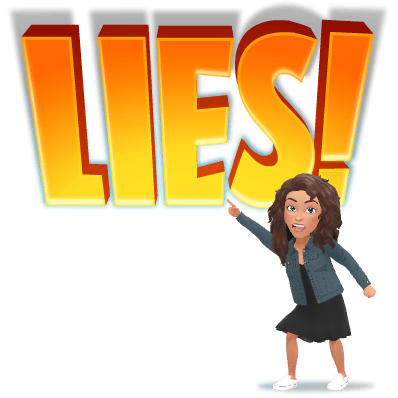I search the internet A LOT to find ideas. I had noticed teachers starting to do Two Truths & a Lie, so I thought I would try it with Calculus.
 We have been discussing characteristics of functions and how to sketch the graphs of polynomials and rational functions using Calculus. I love this part of the unit - students finally see how calculus relates to topics that they have learned in the past. My students on the other hand aren't so happy...I hear all the time - We have a graphing calculator, why not use it? Thank you AP for making part of the exam calculator inactive so my students don't complain AS much since they know that it will be on AP exam. :)
We have been discussing characteristics of functions and how to sketch the graphs of polynomials and rational functions using Calculus. I love this part of the unit - students finally see how calculus relates to topics that they have learned in the past. My students on the other hand aren't so happy...I hear all the time - We have a graphing calculator, why not use it? Thank you AP for making part of the exam calculator inactive so my students don't complain AS much since they know that it will be on AP exam. :)

 We have been discussing characteristics of functions and how to sketch the graphs of polynomials and rational functions using Calculus. I love this part of the unit - students finally see how calculus relates to topics that they have learned in the past. My students on the other hand aren't so happy...I hear all the time - We have a graphing calculator, why not use it? Thank you AP for making part of the exam calculator inactive so my students don't complain AS much since they know that it will be on AP exam. :)
We have been discussing characteristics of functions and how to sketch the graphs of polynomials and rational functions using Calculus. I love this part of the unit - students finally see how calculus relates to topics that they have learned in the past. My students on the other hand aren't so happy...I hear all the time - We have a graphing calculator, why not use it? Thank you AP for making part of the exam calculator inactive so my students don't complain AS much since they know that it will be on AP exam. :)
The gist - students are given one function, instructions (I didn't use that this year), and a post-it note. They found critical numbers, inflection points, increasing, decreasing, concave up, concave down, extrema, and sketched the curve for their ONE problem. I also made them write a justification for each characteristic. Once finished, the students wrote down two truths and a lie about their problem on the post-it. There were no restrictions on their truths and lies (except it had to come from features of their function.)
On the board, I had the 4 functions posted. Students took their post-it and placed it under the correct function. Once all students were finished, I had students walk around and select a "new" function and a post-it where they decided which was the lie. If I had more time, I would have let the students work on more functions. But you know...I can never find extra time in a semester long AP class. :(
Instead of the gallery walk, you can also place the students in groups and do this:
I only had time for students to do one match and I wanted them out of their seats if only for a brief moment, so I changed it up a little this year and didn't use the instruction sheet.
Here is the activity: TTL Features of f(x)
~RJ


Comments
Post a Comment